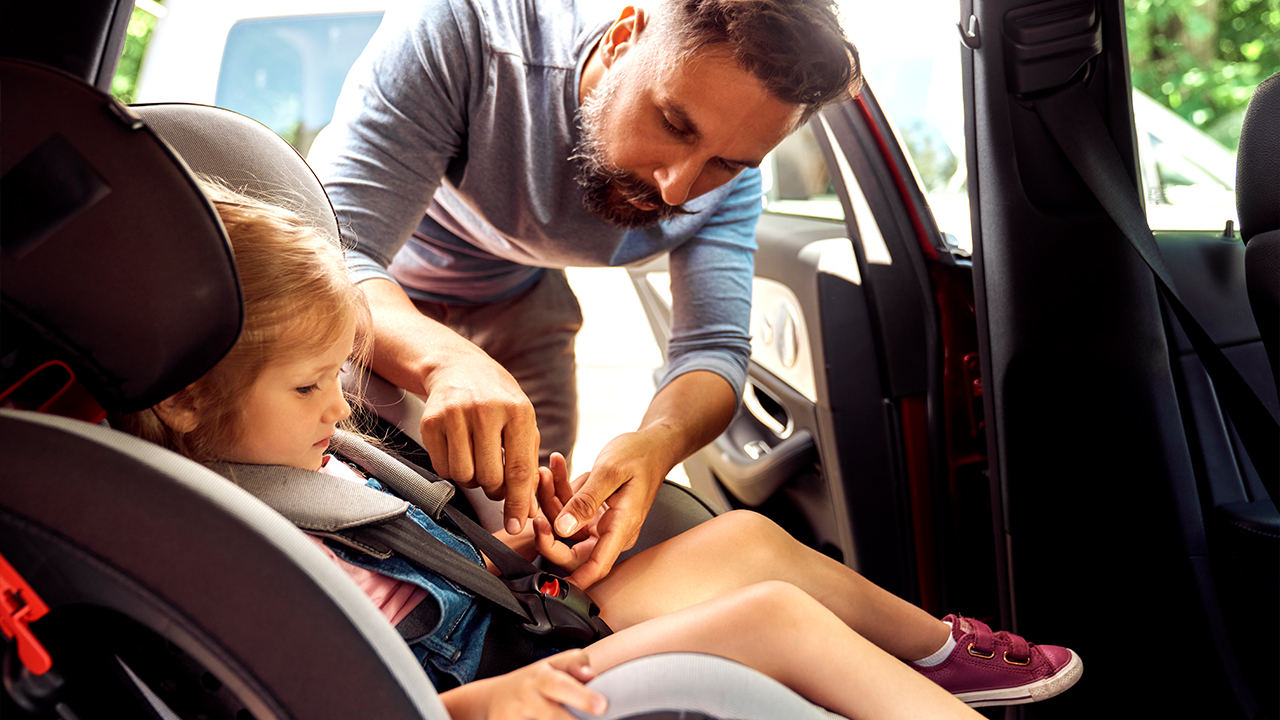
Ah, the intricate process of fixing up a car seat! This daunting task would usually leave you questioning your confidence as an adult.
Haha! Despite the apparent exaggeration, fixing up a car seat for your child is an important skill to learn as a parent. It may seem quite complicated at first. However, you can be happy to know that we have cracked the code to easily install and reinstall your child’s seat with minimum hassle and a boatload of confidence.
How important is it to learn the proper process?
Very.
Installing your kid’s car seat should be done with great care and attention. Learning how to fit and secure the seat correctly is essential for ensuring your child’s safety.
Let us tell you why: Studies show that 7 out of 10 child restraints aren’t fitted correctly according to the required standards. A baby or toddler who is not restrained correctly could easily be killed in case of an accident, at a speed as low as 8 kilometers per hour. To put it into perspective, that is just above the average pace of an adult walking with no hurry. Your child is precious, and they are incredibly fragile for the first few years. If they are thrown forward during an accident due to the lack of proper restraint, they could die, injure themselves and could also injure or even kill other people sitting in the car.

How do we start?
Firstly, read the instruction manual that comes with the seat. Be careful when you make your purchase, and always buy from a reputed dealer. The instructions manual will vary from brand to brand, so do not attempt to wing it if you have had prior experience.
We know that reading the instruction manual is no thrilling task. Yet, it’s a non-negotiable deal that comes along in the universal code of baby care. Follow the instructions given to a dot and do not gamble with any provided step.
Trust us; it does pay, albeit non-financially, to take extra time and care to fit your seat correctly and securely.
Could you do it by yourself?
You absolutely could. However, it is recommended by safety experts that you get your child’s car seat fitted professionally, especially when you are doing it for the first time. This is due to certain products such as capsules and rear-facing or convertible seats, which would guarantee the best safety for your child could often be tough to fit. It would provide a challenge to an inexperienced parent.
As an added precaution, and to make your life easier, you can observe the car seat fitting expert when they go about their business; you can record them with consent and ask many questions about the procedure. This will help if you are at the helm of fixing the car seat. We would also recommend that you store away the seat’s instructional manual in a safe place for future usage. If neither of these is possible, you can refer to instructional videos online.
How to Choose a Proper Car Seat
All child car seats sold within New Zealand must adhere to the Australian and New Zealand Standard 1754. It is one of the most rigid child restraint standards globally, which ensures that your child’s safety is given utmost priority if this standard is met. Child car seats marked with this standard offer better protection for your child in a crash. It should be noted that since 1995, all new passenger cars in New Zealand have been required to install anchor points to support child restraints.
Legal Note: It is illegal to transport a child under the age of seven years old without using a child
restraint or booster for seating them when traveling in a car.
- The following are the laws in New Zealand that regulate which car seat you need for your child from birth to 16 years:
- Up to six months: Your baby should be restrained in an approved rearward-facing car seat specific to a child. Such as an infant capsule or even a convertible car seat that is designed for babies.
- From six months to four years of age: Your child should be secured in either an approved rearward-facing or forward-facing car seat for children.
- From four to seven years of age or older: Your child must be secured in either an approved forward-facing child car seat with an inbuilt harness or a booster seat restrained by a correctly adjusted and fastened adult lap-sash seatbelt or an approved safety harness.
- Once your child is 145cm or taller: Your child may use an adult lap-sash seatbelt, properly adjusted and fastened. Although it is legal for children to stop using a booster seat once they are seven years old, safety experts strongly recommend that children between seven and 16 years old who are less than 145cm tall continue to use an approved booster seat.
Points to Consider: There are two critical factors that you should consider when choosing a car seat for your baby:
- The age and size of your child
- The size of the car seat (Whether it will fit in your car)
When it comes to fitting capsules, rearward-facing, or convertible seats, the expert advice on the subject follows a similar premise. Usually, it is safe to transport children under six months old in an infant capsule. However, there is a possibility that your baby may grow too fast and would not fit in an infant capsule before the age that they require to be shifted into a forward-facing seat. Then you would then need to install a larger rearward-facing seat until they are big enough to be safely moved into a forward-facing seat.
Let us now walk you through the process of installing the different types of seats that your baby requires for safe transportation.
1.Fitting a Baby Capsule
- Capsules bases are a little complicated to fit. Check for the right anchor points and thread the harness, seatbelt, and tether strap as directed.
- Pull the tether strap taut and firm after attaching it.
- As your child develops, adjust the capsule harness straps. This includes adjusting the shoulder straps to be just above or at the same level as his shoulders.
2. Fitting Rearward-Facing or Convertible Seats
- Fully extend the bottom stabilizing bar and tilt the seat back as far as it will go so that your infant is resting backward at a 45-degree angle.
- Attach the tether strap firmly to the anchor point and pull it tight
- If you’re using a standard car seat, thread the seatbelt through the base according to the manufacturer's directions, ensuring it’s secure and free of tangles.
- Alternatively, ensure the connections are securely attached to the anchorage points if you’re using an ISOFIX-compatible car seat.
- Rock the seat from side to side and backward and forward to ensure nothing is loose or poorly fastened.
- Check that your child’s shoulders are inside the markers, that the straps are untangled and firm against his body, and that the buckle snaps into place properly.
- Adjust the harness straps as your child develops.
3. Fitting a Forward-Facing Seat
- Check that your forward-facing seat has the appropriate anchor points and that the harness is threaded through the correct slots.
- Always attach the tether strap to the anchor point firmly and make sure to pull it tight.
- If you’re using a standard car seat, follow the directions for threading the seatbelt through the base. Make sure that the seatbelt is securely fastened and that there are no tangles.
- Alternatively, if you’re using an ISOFIX-compatible car seat, confirm the connections are securely attached to the anchorage points.
- Rock the seat from side to side and backward and forward to double-check that nothing is loose or poorly fastened.
- As your child grows, adjust the car seat harness straps. This entails repositioning the shoulder straps to the one closest to his shoulders but not more than 2.5cm below them.
General Tips to Ensure 100% Safety
- Before each trip, make sure the harness is adjusted correctly. It won’t entirely protect your youngster in an accident if it’s too loose. Between the strap and your child’s chest, you should only be able to fit two fingers.
- To keep the lap area of the harness across your child’s pelvis and not resting on his stomach, the harness buckle should be as low as feasible.
- Make sure your child is properly strapped in, untangle the harness, and adjust it correctly according to the manufacturer’s instructions.
- When the restraint is used, make sure the tether strap is tight and strong. Check sure the seatbelt is tight and firm and is still fastened if you’re using a standard car seat. Check the connections are firmly secured to the anchorage points if you’re using an ISOFIX-compatible car seat.


